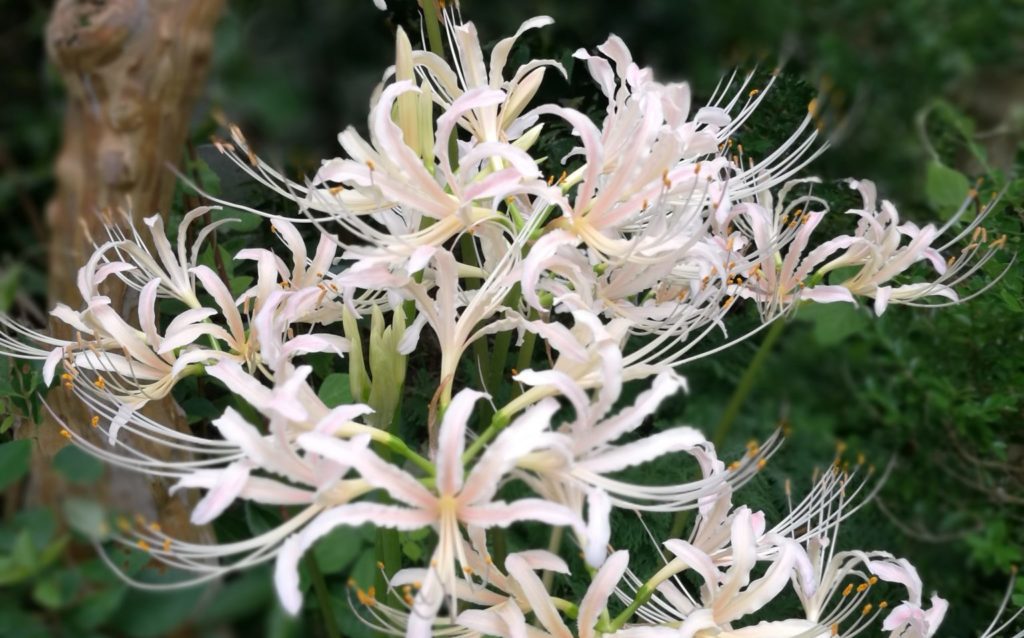Higanbana 彼岸花 Spider Lily viewing
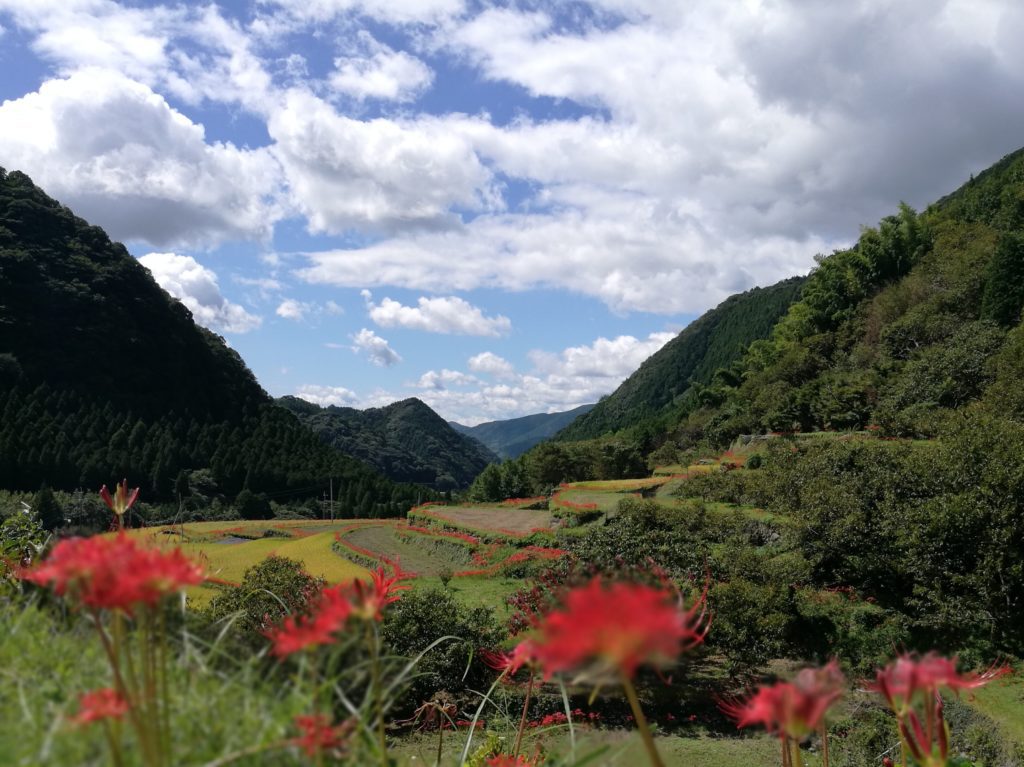
After a long, hot summer the arrival of the spider lillies in mid September heralds the beginning of autumn. The tall stalks and dramatic bright red blooms seem to shoot up out of nowhere appearing around paddy fields, embankments and verges. The flowering season is short lasting only 2 or 3 weeks but if you happen to be in Japan when they are in bloom it’s worth going out of your way to do some Higanbana 彼岸花 Spider Lily viewing.
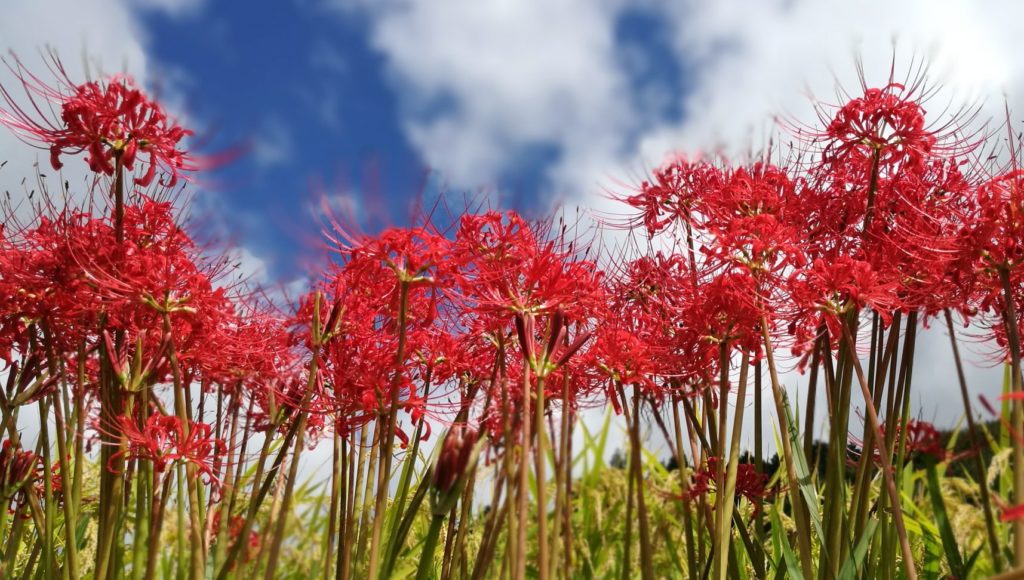
Where to go Higanbana - Spider Lily viewing in Kumamoto?
If you are out in the countryside mid to late September you are bound to see Spider lilies. But there are a couple of spots in Kumamoto which are famous for their displays. The most famous Higanbana -Spider Lily viewing spot is in Yamaga in the north of Kumamoto prefecture.
1. Bansho no Higanbana - Yamaga Town
In the north of Yamaga not far from Yatani gorge is Bansho no Higanbana 番所の彼岸花. (Click on the name for google map link) Ask any photographer and they will agree this is the place to go when the spider lillies are in bloom in Kumamoto.
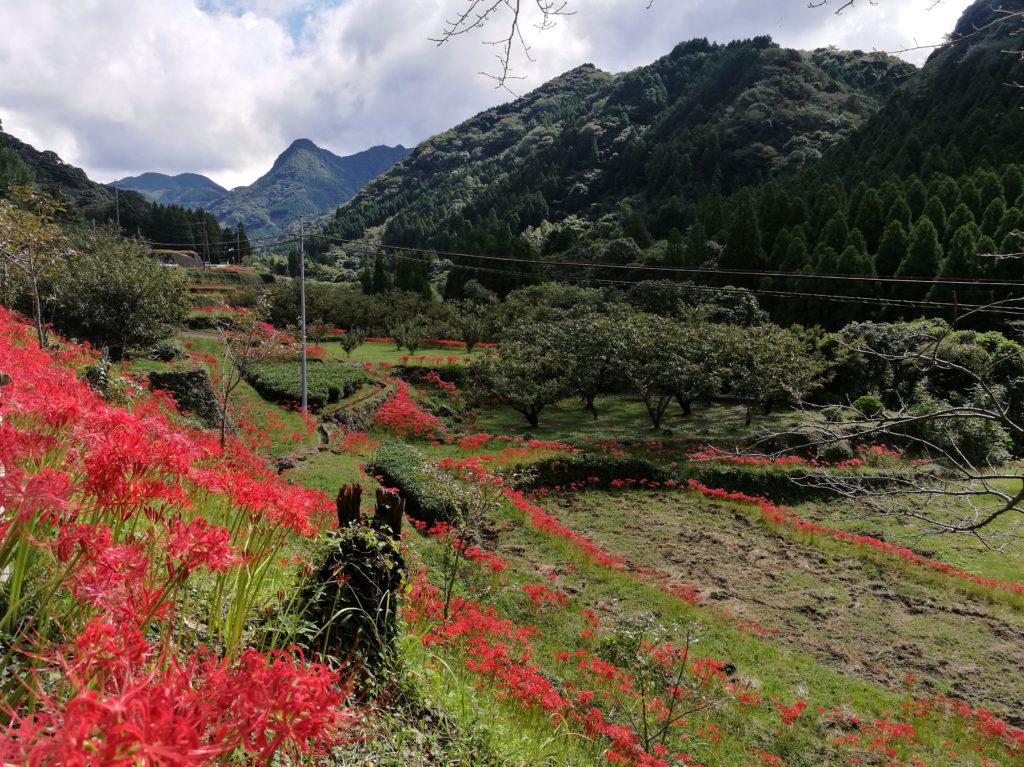
Unfortunately the spot is not reachable by public transport. Bansho no Higanbana is in the charming little village of Kikukamachi, which is just over an hour’s drive from Kumamoto City. Above the village is a wide area of terraced rice fields called Banshoji and the local people have planted spider lilies around the edge of every field. The contrast with the golden rice and the mountain scenery is beautiful, though unfortunately due to the aging population many of the rice fields are no longer farmed.
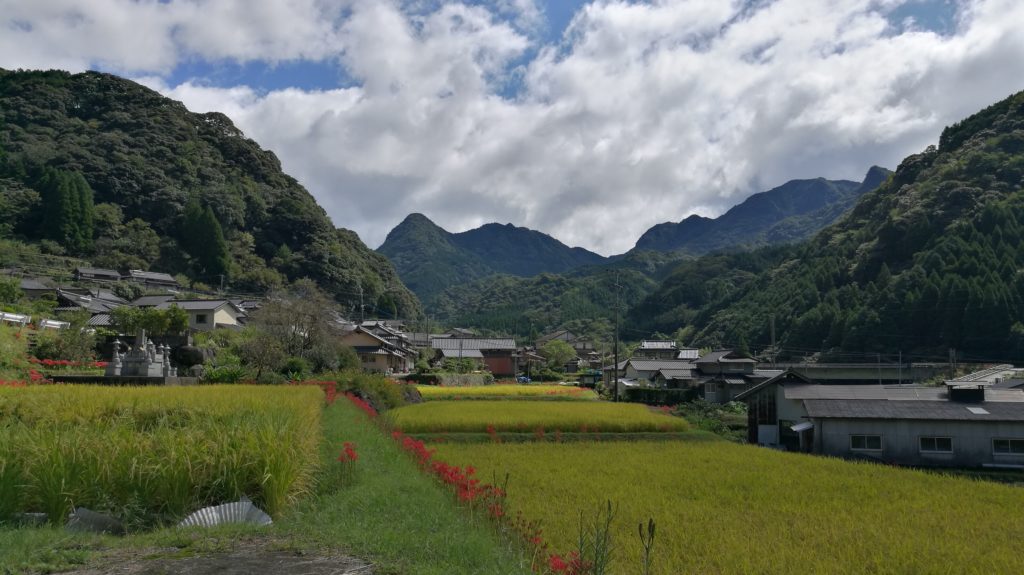
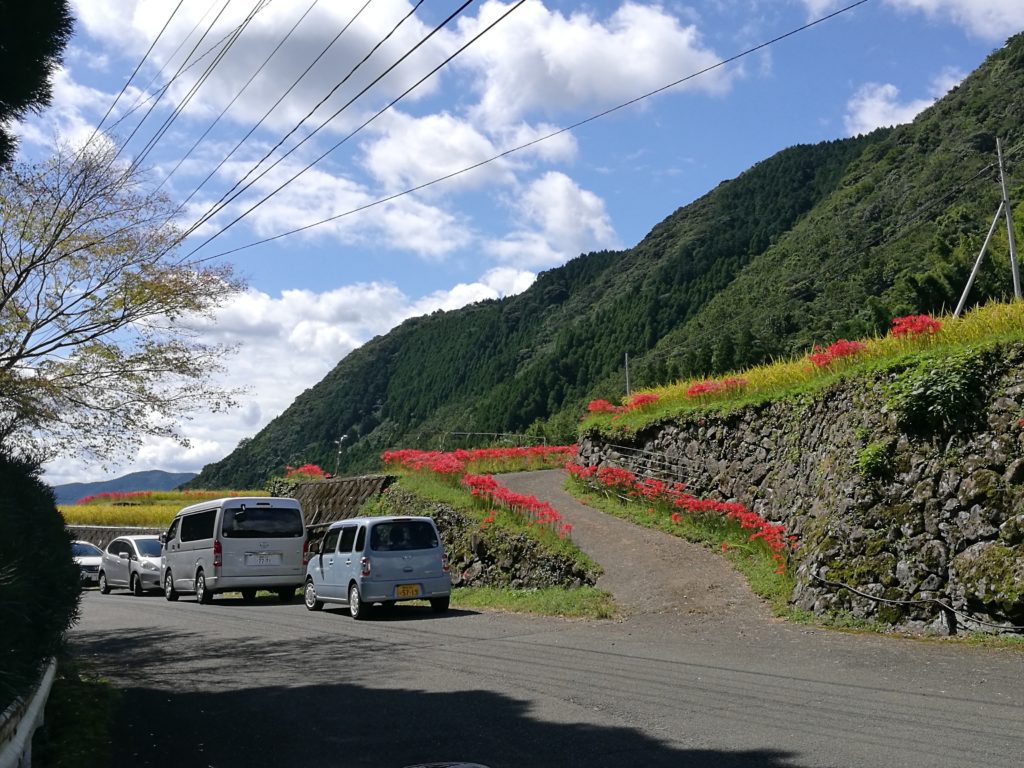
2. Tsujunkyo Bridge - Yamato Town
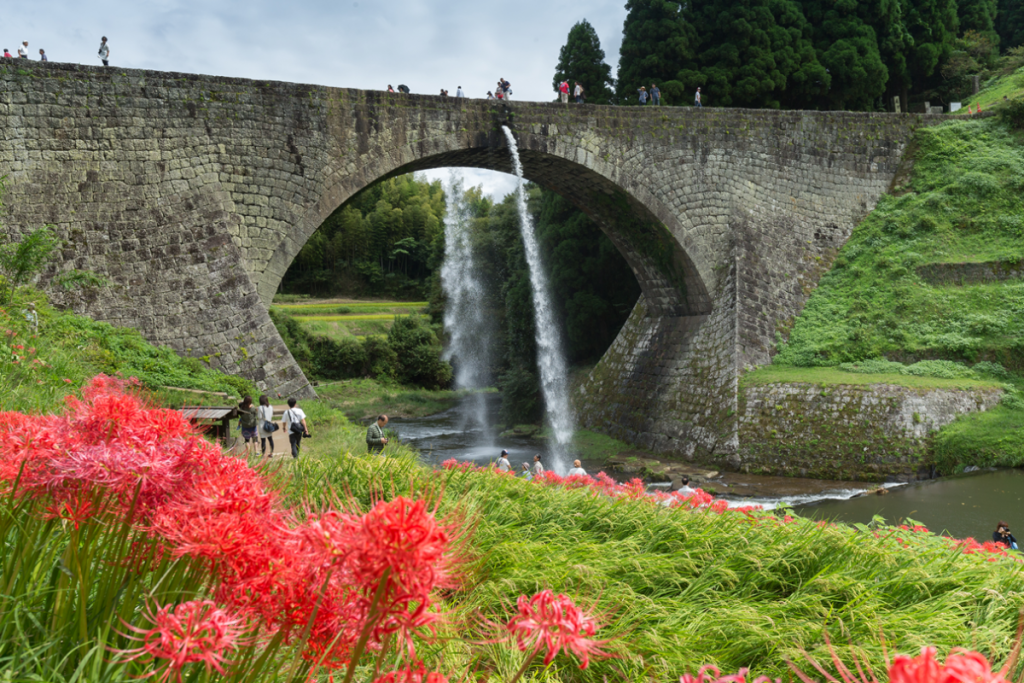
Kumamoto has the most stone bridges of any prefecture and the most famous and unusual stone bridge is Tsujunkyo in Yamato Town. (click on name for a Google Map link)
Tsujunkyo Bridge is unusual because it was built to carry irrigation water to isolated rice fields. The water can be released from the bridge and this popular spectacle can usually be seen at set times on weekends and national holidays. From mid to late September you can combine this with some Higanbana – Spider Lily viewing as in front of the bridge are rice fields bordered with Higanbana which make a very photogenic view.
Though driving is much quicker it is possible to get to Tsujunkyo by public transport, you can take a bus from Sakuramachi Bus Terminal (Kumamoto’s city center bus terminal) to Yamato town which takes 1 hour 42 minutes and costs 1,350 Yen.
3. Riverside Higanbana 川沿い彼岸花 - Mashiki Town
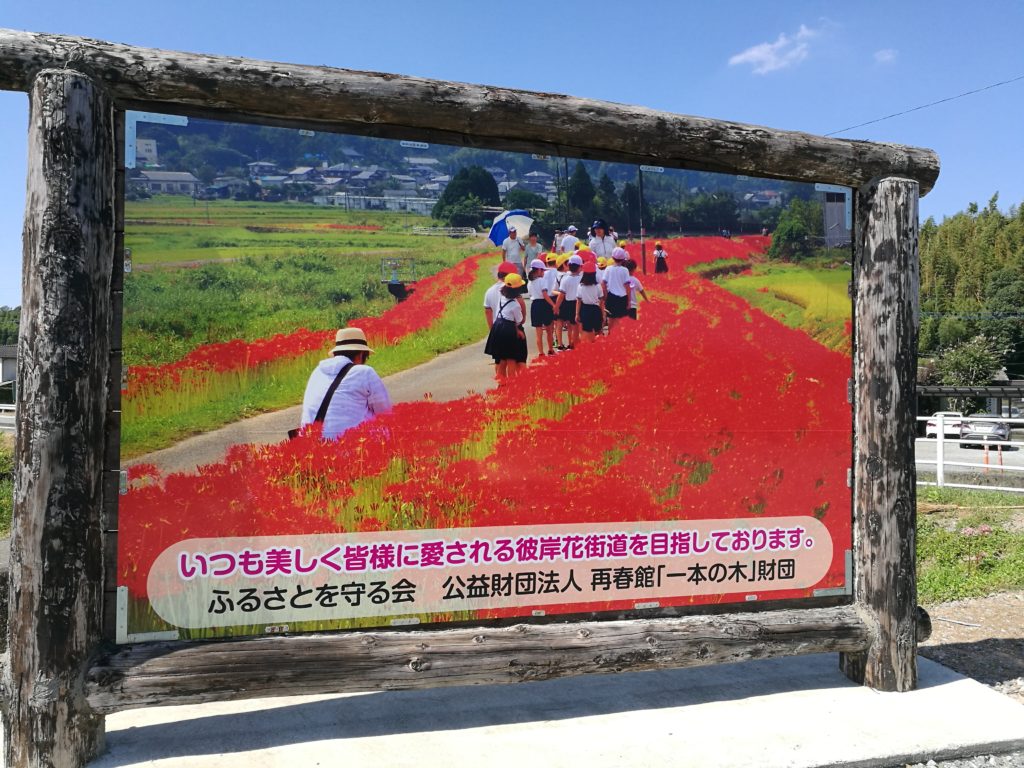
This is another spot you will need to drive to, Higanbana are planted on embankments by a narrow road above a small river in Mashiki Town. The name of the place is Kawazoi Higanbana 川沿い彼岸花 (click on the name for a Google Map link). There is a free parking area with a large signboard (see photo above). The surrounding scenery is not as dramatic as Tsujunkyo or Bansho no Higanbana but a it’s a nice place for a stroll.
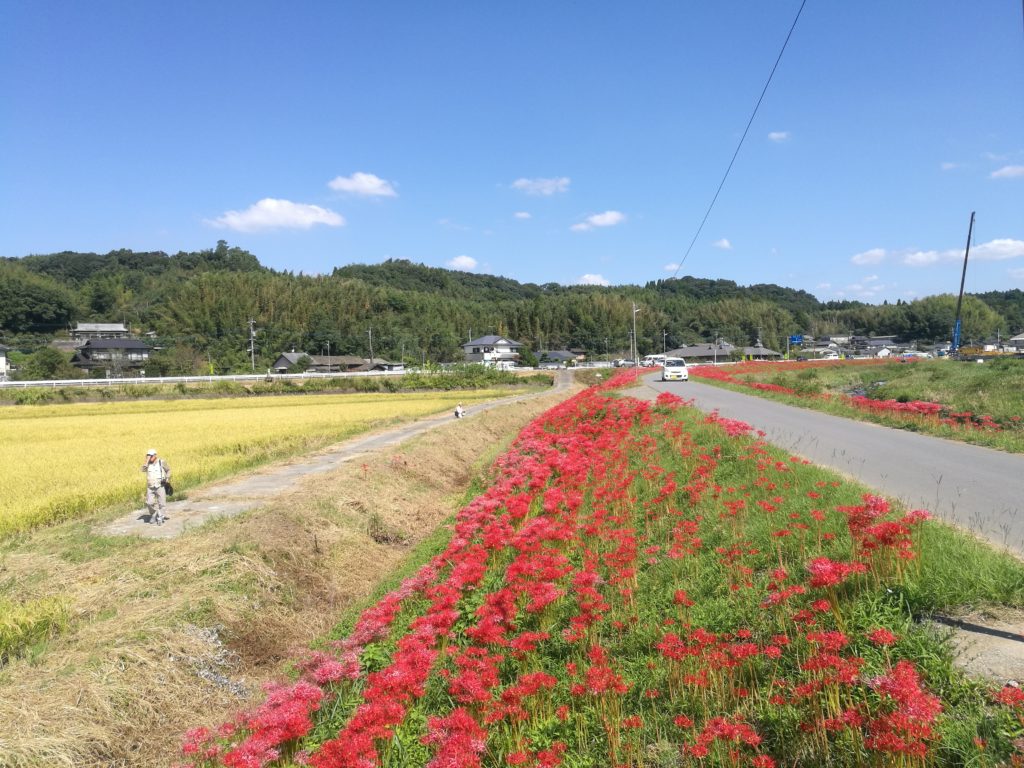
Fancy going Higanbana – Spider Lily viewing but don’t have access to a car?
Explore Kumamoto can offer you a customised seasonal tour to visit any of these Higanbana -Spider Lily viewing spots. A visit to Bansho no Higanbana can be combined with a tour of Kikuchi Gorge or other sights in Yamaga such as the Yachioza kabuki Theater. A visit to Tsujunkyo could be combined with a trip to the stunning volcanic region of Mount Aso, home to Japan’s second most active volcano.
about Higanbana - did you know?
- They may look good enough to eat but don’t! They are poisonous, particularly the bulbs, this is why farmers have always planted them around the rice fields to help keep mice and other hungry rice loving animals away.
- The name Higanbana 彼岸花 means the flower of Higan. Higan is the buddhist festival associated with the autumn equinox and a national holiday in Japan. The meaning of Higan is ‘the other shore’ ie. the land of the dead.
- This is why despite being beautiful you will never see cut Spider lilies in a Japanese flower shop, they are too closely associated with death. They are often planted around graveyards too as before cremation became the custom in Japan they would keep animals away from chewing on the buried corpses.
- Definitely don’t bring Higanbana into your house, folklore says your house will burn down!
- Higanbana are usually red but not always, you may also see white and yellow ones.
- Only after the flowers have bloomed and died the leaves of the plant appear. Because the flowers and leaves never meet in Korea they are seen as a symbol of two lovers being separated.
- Higanbana originate from China, Nepal and Korea but only the female variety was brought to Japan so all Higanbana are grown from bulbs and intentional planting by humans.
- Higanbana’s latin name is Lycoris radiata and they are members of the amaryllis family. Apart from Red Spider Liliies other names for them are Cluster Amaryllis or sometimes Hell Flowers.
